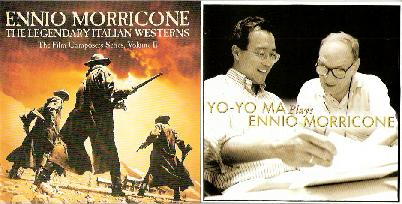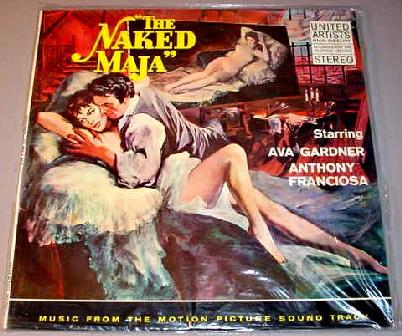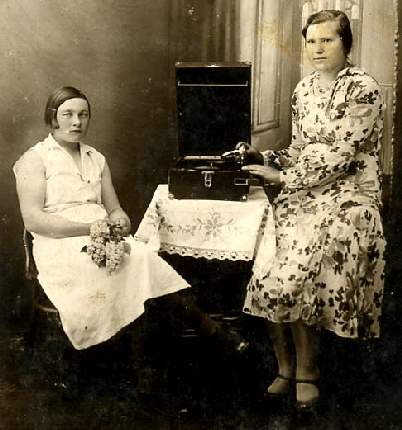Record Collecting 101
Bill Cartmel is the owner of BILLSTUFF, an on-line business specializing in rare records, record supplies, and music memorabilia. The former disc jockey, reporter, and public television producer has been the subject and author of many newspaper, magazine and television news stories pertaining to music and record collecting.
Friday, August 24, 2007
Thursday, August 16, 2007
Film Soundtracks 101
I entered the realm of soundtrack collecting through a back door. I was looking for the music to Cabin in the Sky, a movie directed by Vincent Minnelli with an all-black cast and some wonderful songs performed by Ethel Waters and Lena Horne. I eventually found it with the help of my first soundtrack mentor, a vinyl dealer from New Hampshire named Sandy who specialized in film scores at collector shows throughout New England. I call it the back door because it was a soundtrack only in the sense that it contained songs from the film. What do I mean by that? Ok, this is not a textbook definition of a film soundtrack, and others may wish to add to what I have to say - but essentially there are four types.

The greatest film score composer of all time is Ennio Morricone. Sorry, I accept no arguments. The Film Composers series on RCA includes 31 of his greatest songs. As that will most certainly agree with you, Yo-Yo Ma Plays Ennio Morricone is also a must.
Type One is the Broadway/Musical Cast that was also produced as a motion picture. Oklahoma, Show Boat, and Evita began as theatre productions and were initially released as original cast records, but were so popular they were made into films. This presents the dilemma of whether they should be categorized as musical cast recordings or soundtrack recordings, and explains why we still find film scores and Broadway shows filed together. Although the original cast version of Cabin in the Sky serves up a totally different set of songs than the film soundtrack, it’s the same idea (although you might also see fit to put it in my Type Two category.)
Type Two is a musical that could have started as a Broadway show but didn’t. We’re talking about a film with actors who suddenly break out in song, whether it’s the Beatles or Doris Day. The tradition took hold with films by Bing Crosby, Fred Astaire, Frank Sinatra, and Judy Garland. In the late 50s through the mid 60s they were replaced with a new generation of stars led by Elvis Presley, Annette Funicello, Frankie Avalon, Connie Francis, and Bobby Darin. I can still remember the excitement of going to the Uptown Theatre to see films starring Herman’s Hermits, Gerry and the Pacemakers, and the Dave Clark Five. Mostly we went for the music. The plots (as much as there was one) have long been forgotten. Today, in a sense, they’ve been replaced by music videos.
Type Three represents a huge revenue generator for the music industry, but is the least significant aesthetically in my opinion. I’m referring to the plethora of film soundtracks that are nothing but a collection of songs by various artists – whether they feature the golden oldies of the 50s-70s or contemporary artists. This includes blockbusters like the Big Chill, Footloose, Dirty Dancing, White Nights, and on, and on. I know there are some great songs on these records, and in some cases they don’t exist anywhere else, but you buy them for that reason (or because they’re great to crank up when you’re exercising), not because you love film soundtracks.
Type Four is what primarily appeals to the purists. It’s the film scores written by composers for the sole purpose of complimenting the dialogue and action on the movie screen. From Henry Mancini and his Pink Panther comedies, John Barry and his James Bond action adventures, to Ennio Morricone and the spaghetti westerns. There is real art here. The ability to underscore or heighten a mood without diverting attention from the screenplay is the genius of Bernard Herrmann (Citizen Cane, Psycho, Torn Curtain) Jerry Goldsmith (Patch of Blue, Boys from Brazil, Planet of the Apes), Franz Waxman (Peyton Place, Taras Bulba, Sayonara), Elmer Bernstein (Magnificent Seven, To Kill a Mockingbird, Scalphunters), Maurice Jarre (Lawrence of Arabia, Passage to India, Ryan’s Daughter), Miklos Rozsa (Ben-Hur, Quo Vadis, Spellbound), Alfred Newman (The Robe, Captain from Castile, Song of Bernadette), Riz Ortolani (Mondo Cane, Maya, Cleopatra), Michel Legrand (Ice Station Zebra, Summer of ’42, Thomas Crown Affair), Nino Rota (Godfather, Romeo and Juliet, War and Peace), Lalo Schifrin (Cool Hand Luke, Amityville Horror, Man from U.N.C.L.E. ), Dimitri Tiomkin (It’s a Wonderful Life, Guns of Navarone, Wild is the Wind), John Williams (Jaws, Star Wars, Home Alone), and Max Steiner (Gone with the Wind, Caine Mutiny, King Kong). These are some of the great ones. Their prolific works, longevity, and critical reviews have put them at the top of their field.

What ignited my passion for film soundtracks wasn’t necessarily the music, but album covers like this one. Seriously, album art is another enjoyable aspect of the hobby.
Other types of soundtracks straddle these four basic categories, and perhaps there are additional ones I have completely overlooked. For example, the Disney films with singing critters, and those magnificent releases of Carl Stalling’s eccentric music created for Warner Brothers cartoons. You have the collections and box sets of works by Mancini, Newman, Hermann, and Williams. There are the soundtracks from foreign films like Black Orpheus (Carlos Jobim) and Lisbon Story (Madredeus) that showcase the works of one vocal artist or group, but don’t fit easily into the categories I’ve presented. Meanwhile, there exists an impressive library of recordings by artists who have built on these creations, such as George Winston playing Vince Guaraldi’s Charlie Brown music; Cal Tjader tearing into Leonard Bernstein's West Side Story; and one of my favorite CDs right now, Yo-Yo Ma plays Ennio Morricone. Uh oh, I left out the concert films like Woodstock, and Stairway to Heaven.
As I clarify in my own mind the different kinds of soundtracks that exist, I can honestly say hardly a day goes by I don’t discover something new to add to my collection. The funny thing is, I’m not a movie buff. I hardly ever watch movies, or even television for that matter. I’ll bet I haven’t gone to the theatre to watch more than 10 movies in the past 20 years, and most of them were Disney films that I took my kids to see. The same goes for movies on video. I don’t particularly care for movies. I just like the music.
I’m not prepared at this time to create my personal list of the Greatest Film Soundtracks, largely because I know I will leave one out and regret it later. What I will do is tell you which ones currently seem to most frequently find their way to my turntable or CD player. If you haven’t listened to some of these, I strongly recommend that you find an opportunity to do so.
Type One Films:
Finian’s Rainbow (Music and lyrics by Burton Lane and E.Y. Harburg.)
Paint Your Wagon (Alan Jay Lerner and Frederick Loewe. I'm in the minority, but I love Lee Marvin’s singing in this film.)
Fiddler on the Roof (Jerry Bock and Sheldon Harnick)
Cabaret (John Kander and Fred Ebb)
La Cage Aux Folles (Jerry Herman)
South Pacific (Rodgers & Hammerstein)
Brigadoon (Alan J. Lerner and Frederick Loewe)
Type Two Films:
Shock Treatment (The sequel to Rocky Horror Picture Show. I suspect I'm the only person on the planet who prefers the music of Shock Treatment over Rocky Horror.)
The Commitments
Singin' in the Rain (Nacio Herb Brown and Arthur Freed)
Calamity Jane (Sammy Fain)
Gay Purr-ee (Harold Arlen and E.Y. Harburg)
Blues Brothers
A Mighty Wind
Type Three Films:
Mysteries of the Nile (The IMAX film featuring various African and Middle Eastern musicians.)
A Year in Provence (from the BBC TV Series.)
Type Four Films:
Quest for Fire (Philippe Sarde)
Amistad (John Williams)
Anne of Green Gables (Hagood Hardy)
Crouching Tiger (Tan Dun)
10th Kingdom (Anne Dudley)
Third Miracle (Jan A.P. Kaczmarek)
Mission (Ennio Morricone)
Captain Corelli’s Mandolin (Stephen Warbeck)
Fairy Tale: A True Story (Zbigniew Preisner)


